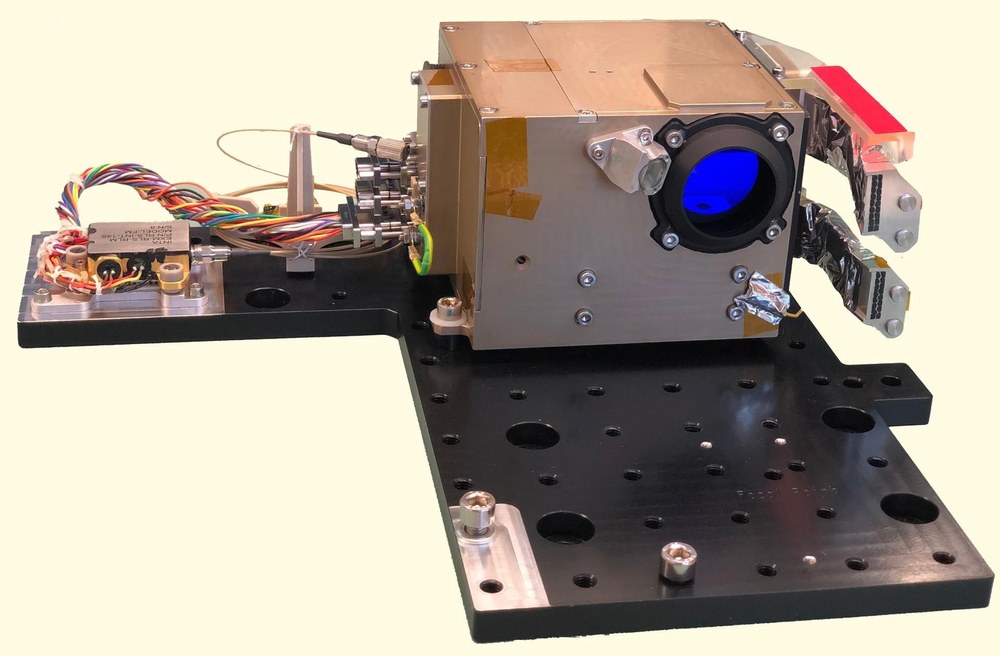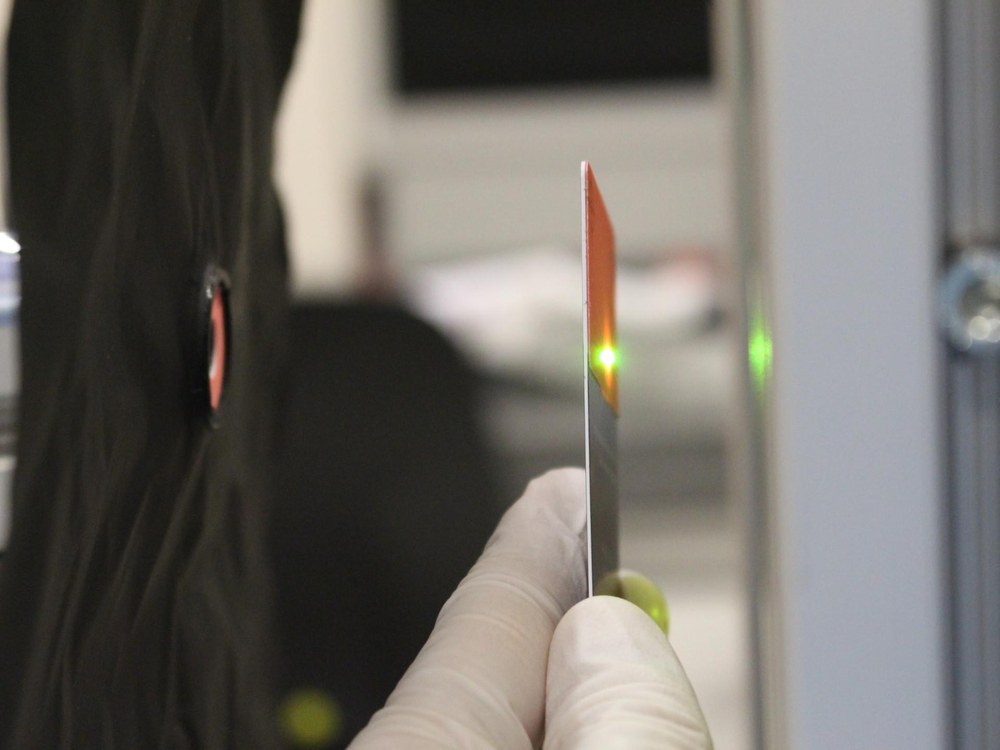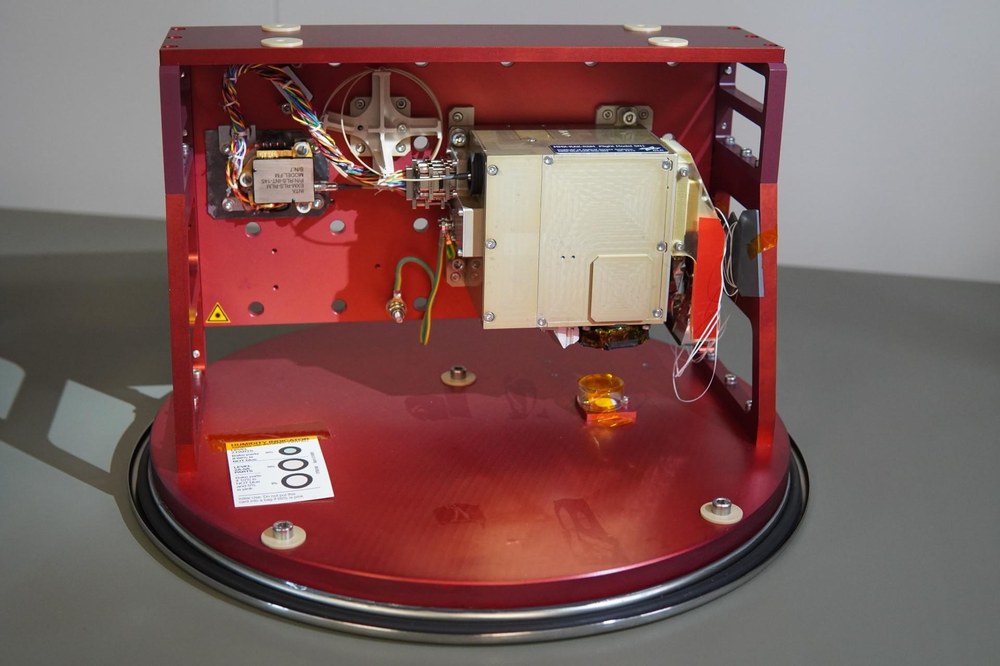The Raman spectrometer RAX



Minerals on the surface of a solid celestial body, such as that of a moon, are closely related to how it formed and its environmental conditions. The detection of a particular mineral can prove, for example, that another celestial body must have once impacted, that the body also contains material from other regions of the planetary system or that liquid water was present.
The composition of small bodies (asteroids, comets, moons) differs depending on whether they come from the inner Solar System or the outer, cold regions. Proximity to the Sun means that volatile components such as water, certain carbon compounds or nitrogen are seldom present. In cold regions, on the other hand, high-temperature minerals – such as olivine crystals – are not found.
Cosmic radiation can also alter minerals that are exposed to it over the course of time. Processes and influences on a celestial body can therefore be reconstructed on the basis of the mineral deposits on its surface in order to learn something about their formation and subsequent development.
Raman spectroscopy is a good way to identify minerals and molecules on site with a rover. For this purpose, laser light is directed onto the material to be examined and the backscattered light is analysed. The chemical bonds of different materials cause the laser light to be scattered in very characteristic ways, which makes it possible to identify them.
RAX – a collaboration between Germany, Spain and Japan
Raman spectroscopy as an analytical technique is still relatively new in space missions. The RAman spectrometer for MMX (RAX) will be the third Raman instrument to make its way to an extraterrestrial destination. The first two Raman spectrometers for robotic exploration of the Solar System – the Scanning Habitable Environments with Raman and Luminescence for Organics and Chemicals (SHERLOC) and SuperCam – are mounted on the US space agency NASA's Perseverance rover. Perseverance has been investigating Jezero crater on Mars since 2021.
The DLR Institute of Space Research is leading both the scientific team and the development of the RAX instrument. For this purpose, it can apply its many years of experience to the use of Raman spectroscopy in planetary research and in the development of spectrometers for space research.
RAX, which was developed for the MMX rover IDEFIX, uses a green laser focused on a spot only 50 micrometres in diameter beneath the rover. The laser is being provided by the Spanish National Institute of Aerospace Technology (Instituto Nacional de Técnica Aeroespacial; INTA) and is a duplicate of the laser originally developed for the Raman Laser Spectrometer (RLS) on the European Space Agency's Rosalind Franklin Mars rover.
The autofocus mechanism for RAX was contributed by the Japan Aerospace Exploration Agency (JAXA), with the development led by the University of Tokyo. To perform a Raman measurement, the entire rover lowers to approach Phobos' surface. At a working distance of approximately eight centimetres, the RAX autofocus mechanism then comes into play and positions itself more precisely than 0.1 millimetres in relation to the surface. The instrument is notable for its particularly compact design. In a volume of only one litre, it contains not only the laser and the optics, but also a small detector with which the Raman radiation is sensed.
Apart from the unambiguous identification of minerals, another advantage of Raman spectroscopy is that the samples are analysed only by optical access – irradiation by a laser and collection of the returned light. This allows a lot of data to be collected without much effort. Multiple measurements along the rover's route can reveal interesting differences in local composition. Data measured on the surface of Phobos will complement the data obtained with the help of the instruments on the MMX orbiter. They will help scientists better understand the martian moon system and its formation.
MMX – Martian Moons eXploration
MMX is a mission of the Japanese space agency JAXA with contributions from NASA, ESA, CNES (the French space agency) and DLR. CNES (Centre National d'Études Spatiales) and the German Aerospace Center (Deutsches Zentrum für Luft- und Raumfahrt; DLR) are jointly contributing a 25-kilogram rover to the Martian Moons eXploration Mission (MMX). The Franco-German MMX rover is being designed and built under the joint leadership of CNES and DLR. In particular, DLR is responsible for the development of the rover's landing gear, including the lightweight body, as well as the entire uprighting and locomotion system. DLR is also contributing the connection adapter to the MMX spacecraft and providing a Raman spectrometer and a radiometer as scientific experiments. These will analyse the surface composition and texture on Phobos. CNES is making significant contributions with camera systems for spatial orientation and exploration on the surface, as well as for the study of mechanical soil properties. CNES is also developing the rover's central service module, including the on-board computer and the power and communications system. After the launch of the MMX mission, the rover will be operated by CNES control centres in Toulouse (France) and DLR in Cologne (Germany).
For DLR, the institutes of System Dynamics and Control, Composite Structures and Adaptive Systems, of Space Systems, of Space Research, for Software Technology and the Microgravity User Support Center (MUSC) are also involved under the leadership of the DLR Institute of Robotics and Mechatronics.
The MMX mission is a continuation of an already long-standing successful cooperation between JAXA, CNES and DLR. It builds on the previous mission Hayabusa2, in which JAXA sent a spacecraft to the asteroid Ryugu with the German-French MASCOT lander on board. On 3 October 2018, MASCOT landed on Ryugu and sent spectacular images of a landscape ridden with boulders and rocks, and virtually no dust. Hayabusa2 collected samples from Ryugu and brought them to Earth on 6 December 2020.
